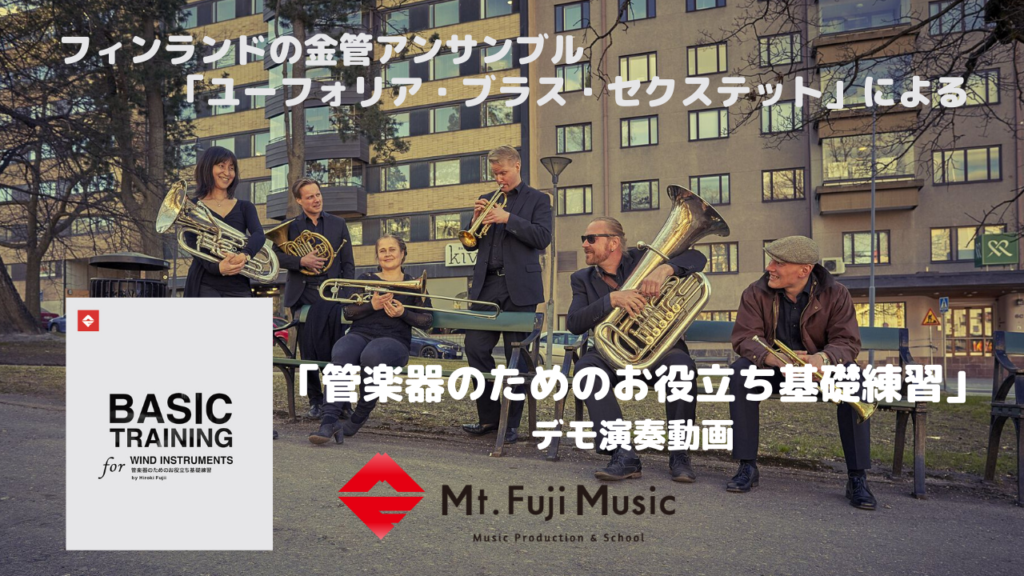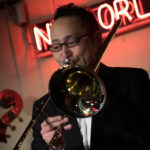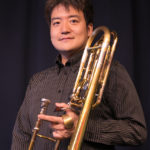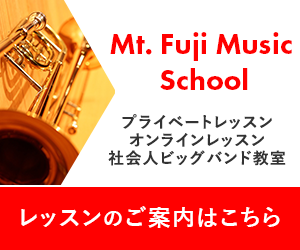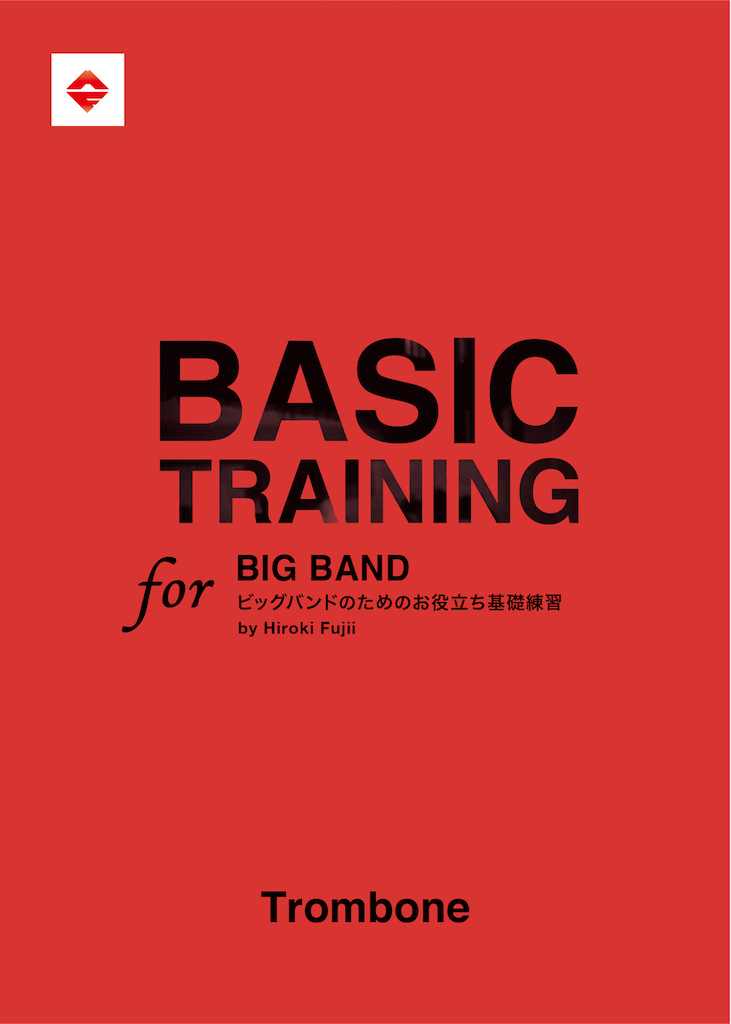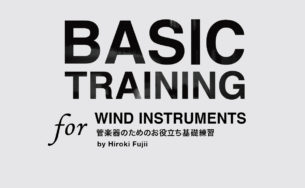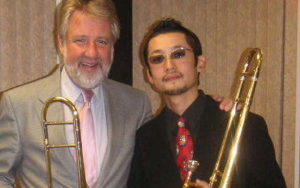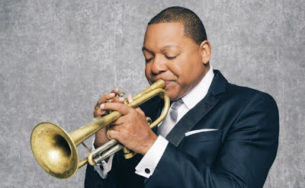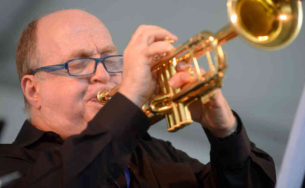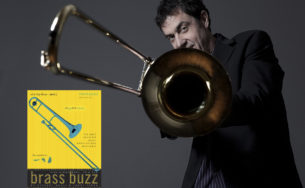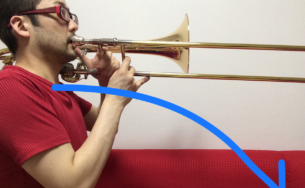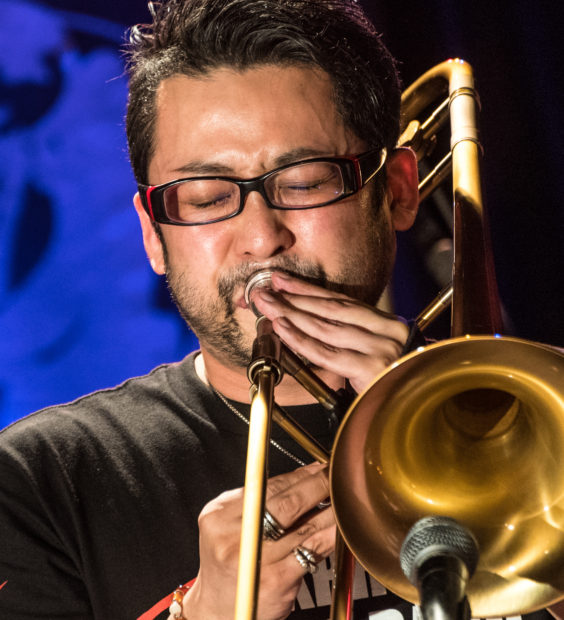トロンボーンの上達のために必要な情報が詰まった、元ロンドン交響楽団、ウィーン・フィルハーモニー管弦楽団の首席トロンボーン奏者で、現在はスイスの音大の先生であるイアン・バウスフィールド氏のティーチング動画の後半の解説です!
※実際には、管楽器全般、音楽全体にも言える素晴らしい内容です。
前半(No.1-5)はコチラ
イアン・バウスフィールド氏による「トロンボーン上達の10のポイント」No.1-5
『No.6』
Organize your slide technique.
スライドのテクニックについてオーガナイズ(整理)してみましょう。
The trombone is different to other brass instruments, easy instruments like the trumpet, or the euphonium, or the tuba by the fact that it uses a slide.
トロンボーンは、スライドを使用するという点で他の金管楽器、トランペット、ユーフォニアム、チューバのような簡単な楽器とは異なります。
Now this trips us up that’s causes a lot of problems.
ここで多くの問題を引き起こし、つまずく事になりますね。
It breaks our air flow up. And it also causes problems with the timing of the tongue and the air.
一つは、息の流れが止まってしまう事。もう一つは、(息の流れをともなった)タンギングのタイミングにも問題を引き起こします。
So we need to understand how the slide works.
私たちは、スライドがどのように機能するのかを理解する必要があります。
This is the timing point to everything that we do.
スライディングで起きる問題の全てはタイミングによるものです。
Now, before we go any further, don’t go crazy about the speed of your slide.
A lot of people talk about using a fast or a slow slide arm. It’s not about that. It’s about the timing.
話を先に進める前に言っておきたいのは、スライドのスピードに夢中になってはいけないという事。多くの人がスライドの動きの速い、遅いに注目していますが、そうではなく、タイミングの問題です。
Here is a good exercise.
ここに良いエクササイズがあります。(デモンストレーション)
So we move the slide, as we articulate. That’s the point. The slide says the notes going to happen. Now, now, now. And if we listen, also, the slide moves exactly the same in legato as in detached.
はっきり発音しながら(タンギングの瞬間に合わせて)スライドを動かします。それがポイントです。スライドは、音が出るタイミングで動かすのです。今、今、今という風に。レガートのように繋がっていても、スタッカートのように切り離された状態でも、全く同じように動かします。
※レガートはゆっくり、スタッカートは速く動かすんじゃないという意味だと思います。
『No.7』
Never push with the tongue.
決して舌で押さないでください(タンギングに頼り過ぎないでください)。
We articulate notes of course by using the tongue. But so many people get into a lot of trouble by hitting the back of the teeth.
もちろん舌を使って音を明瞭に表現するのですが、多くの人が歯の裏辺りに舌を打ちつけるように発音している事によって、多くの問題が起きています。
So hard with the tongue that it interrupts the air flow. It causes problems with the throat.
舌が固過ぎるため、空気の流れが妨げられ、喉にも問題を引き起こします。
The basic rule: number 1, it’s not what you don’t do with the tongue. It’s about how much pressure there is behind it. Don’t ever push. It’s just a touch.
それはあなたが舌でしない事ではありません(自分で問題ないと思っていても、実は前述の問題が舌の使い方によって起きていなくもないですよという意味?)。その背後にどれだけのプレッシャー(弊害?)があるかという事です。決してプッシュしないでください。ちょっとしたタッチです。
That’s the mantra. The tongue is just a -tah-. Never, never hit. Clarity is about the relaxation of the tongue. Not about how hard we use it.
それがマントラ(持説、信念、主張?)です。
タンギングはただ「ター」とやるだけ。決して打ちつけるようにはしない事。音の明快さは、舌のリラックスによるものです。どれだけハードに使うかではありません。
And also another misnomer in brass playing is, we keep hearing we should use the tip your tongue.
もう一つの管楽器奏者による誤解は、タンギングで舌の先端(だけ)を使うべきだと聞いている事です。
I can’t use just the tip my tongue. Actually my tongue is contacting all of the way around the top. It’s not possible just to use the tip your tongue.
舌の先端だけを使う事は出来ません。実際私たちの舌は(頭部の)あらゆる場所と(筋肉が?)繋がっています。舌先だけを動かすのは(構造上)不可能です。
But let’s go back to the main point. Don’t ever push with your tongue.
要点に戻りましょう。決して舌を押しつけないでください。
『No.8』
Understandingly legato, there are two kinds of legato that we use on the trombone.
レガートを理解しましょう。トロンボーンには2種類のレガートがあります。
There is the natural legato that passes across harmonics.
一つは倍音をまたぐ自然なレガートです。(デモンストレーション)
Then again, because we don’t have valves, we have to use a different legato when we go along the same harmonic.
繰り返しますが、トロンボーンはバルブがないので、同じ倍音列の場合は(前者とは)違うレガートを使わないといけません。(デモンストレーション)
And the articulation that we use on that harmonic legato is different from the one that we use on the detached articulation. It’s like a lick.It’s like a too too too…, su su su, too too too too.You can hear it in the trombone.
倍音をまたぐレガートと、バルブのように音を区切るレガートは異なります。舐めるような舌の使い方です(lick=舐める。No.7で言っているような滑らかなタンギングという意味だと思います)。こんな感じで。トロンボーンでやるとこんな風に聴こえます。(デモンストレーション)
Some people to say just to say a soft dah or ru or something like that.
ソフトな「ダー」や「ルー」と言う人もいます。
But let’s be clear. It’s either detached, or it’s legato. Legato is a different articulation to the one that we use for detached.
音を切り離すのか、レガートなのか、アーティキュレーションは明確にしましょう。レガートはスタッカートのように演奏する奏法とは別物です。
And when we go across the harmonics with the harmonic legato the important things is to think about constant air all of the time.
倍音をまたぐレガート(リップスラー)の場合、重要なのは、常に一定の空気(息)が楽器に送りこまれている事です。
『No.9』
Play scales.
スケール(音階)を演奏しましょう。
I usually aim to play every scale, every day – or if I’m more honest – all of the majors, all of the minors, everyday, one or the other.
私はいつも、毎日全てのスケールを演奏するよう努めています。もう少し正直に言うと…全てのメジャー(長調)、マイナー(短調)をどちらか一方はやるようにしています。
All music that we play is pretty much made up of scales. It is important that, from a very early age, we understand the tonality, we understand feel and the emotion of scales. Each scales has a different emotion.
私たちが演奏する全ての音楽は、ほぼスケールで構成されています。若いうちからトナリティー(調性)を理解し、スケールごとの雰囲気や感情を理解する事が重要です。それぞれのスケールには違った感情があります。
Apart from the technical aspects, about learning to play across the range, developing our sound, working on the intonation, working on our articulation.
技術的な観点から離れますが、音域(の高低)を行き来して演奏しながら学ぶこと、サウンド(音)を良くする事、イントネーションやアーティキュレーション(音程や発音などのニュアンス)の向上に取り組む事。
There are any number of things that we work on with scales. Now, there are two ways we can work on them that are the most important for me.
スケールを使って演奏するやり方はいくつもあります。2つ紹介しますが、それは私にとって最も重要です。
The one that you’re probably used to doing is the … – nice’n slow, but we have to breath on the way up. And if we’re not careful we get we called embouchure break when we reset the mouthpiece.
おそらくあなたが慣れているのは…(デモンストレーション)ゆっくりと。途中で息をする必要があります。気をつけていないと、(ブレスで)マウスピースをリセットした時にアンブシュアが崩れます(アンブシュア・ブレークと呼ばれます)。
So practice the scales two ways, once slowly, and once… – so we cover two octaves. As high as we’d like to go.
スケールを2つの方法で練習してください。ゆっくりと、もう1つは…(デモンストレーション)。2オクターブ、もしくはそれ以上でも良いです。
It doesn’t matter whatever standard you are at, as long as we get those two octaves covered without any breaking the embouchure. And then of course, we play them legato as well.
2オクターブ、アンブシュアを崩さずに出来ればどんな形でも構いません。もちろんレガートでも練習します。
『No.10』
The lips respond to the speed of the air.
唇は空気(息)のスピードに反応します。
I think we make a bit of a mistake when we think that when you play high, we tighten the lips up and when we play low, we relax them.
高い音で唇を締め、低い音で緩めると思っているだけだと、小さなミスが起きると私は考えます。
That’s pre-emptively doing something that can be done quite naturally by the air.
Ahh… as we go higher, we put the air through the instrument faster and the lips have to work that bit harder just to hold in position. And when the air goes slow as we go lower, they relax.
高い音になるにつれて、速い息を楽器に通すため、唇はアンブシュアをキープするために少しハードにします。そして、低い音に行く時は息のスピードが遅くなり、リラックスします。
So we develop the high register… by increasing the air speed and the lips have to work harder as we go higher.
私たちは、息のスピードを上げる事によって高音域を発達させます。高くなるにつれて唇はよりハードになります。
If we pre-emptively clench … We all recognize that one.
先に(息を出す前に)食いしばってしまったら…(デモンストレーション)こうなるのは想像出来ますよね。
Instead of the relaxed… where the lips will just react to the speed of the air. It’s a difficult concept, but once you get it, it will make a big difference to your high register.
とは言え、常にリラックスという訳ではなく(デモンストレーション)、唇は空気の速度に反応してコントロールします。これは難しい概念ですが、一度それを習得すると、あなたの高音域に大きな変化が起きるでしょう。
レッスンのご案内
☆音楽教室で直接プロのレッスンを受けたい方は、当社でマウントフジ・ミュージックスクールを運営していますので、ぜひ習いに来てください♪
『古明地 慶子』(尚美ミュージックカレッジ専門学校卒/東京ディズニーシー・マリタイムバンド etc.)
『川原 聖仁』(立命館大学卒/ジャズ・トロンボーン・カルテット・ヴォルツ/aiko, 杏里, ATSUSHI(EXILE)サポートバンド etc.)
『朝里 勝久』(武蔵野音楽大学卒/ジャズ・トロンボーン・カルテット・ヴォルツ/桑田佳祐、矢沢永吉サポートバンド etc)
楽譜販売のお知らせ
☆『管楽器のためのお役立ち基礎練習』、売れてます!